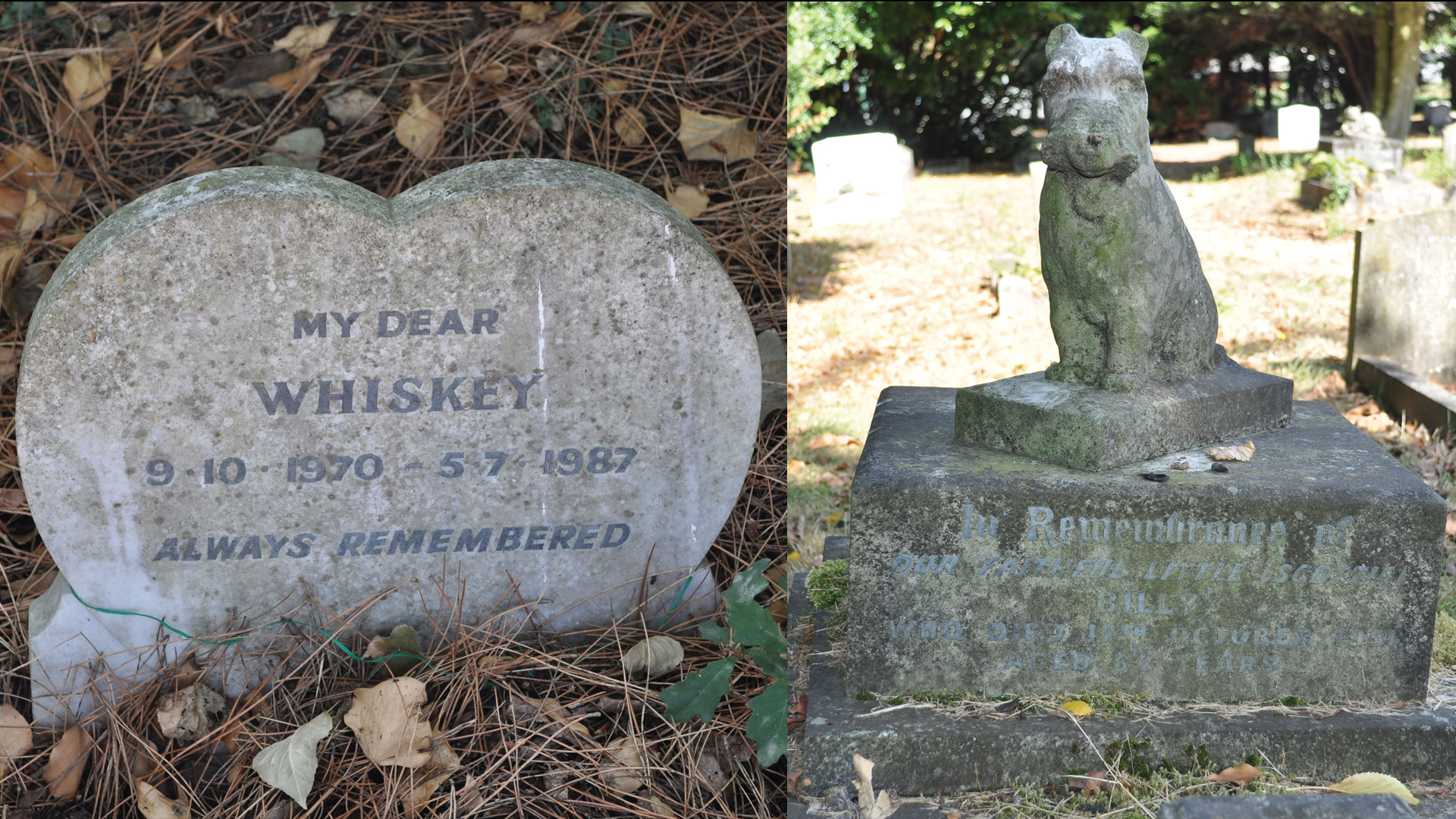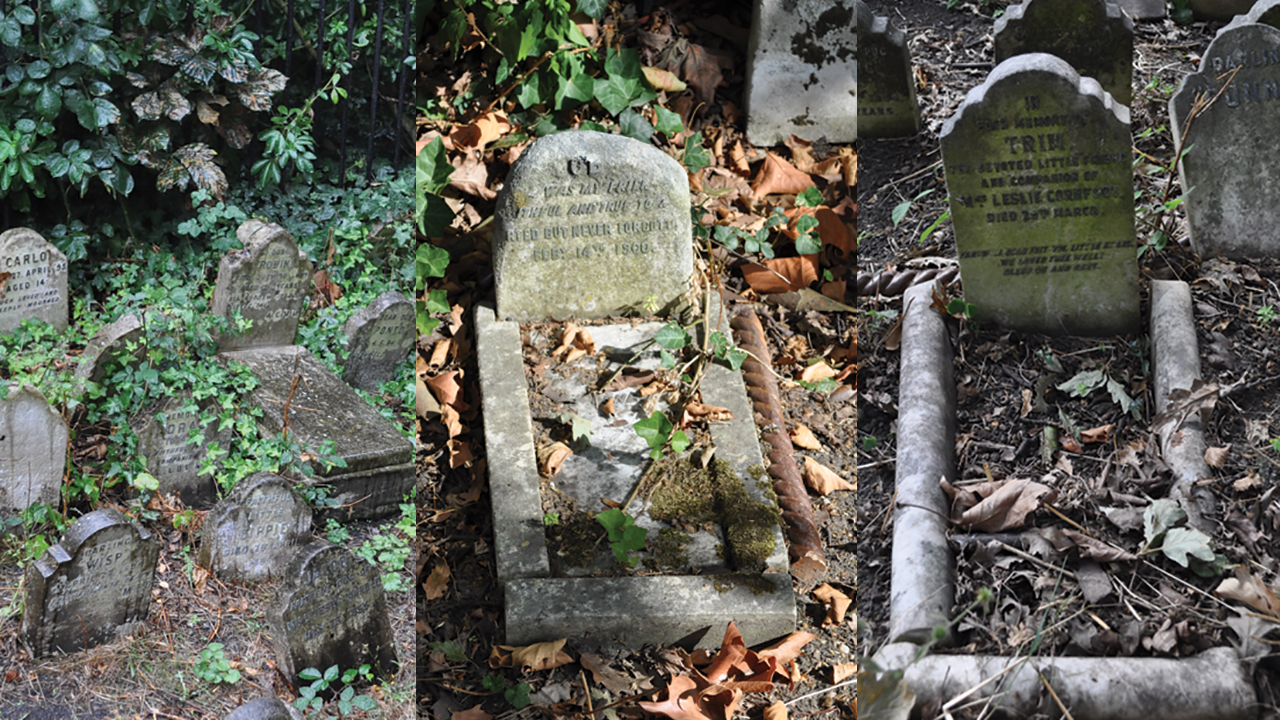Is there a puppy heaven? Owners think so, headstones in pet cemeteries show
The notion of pets enjoying an afterlife has grown in popularity since the 19th century.

Pet owners in the 19th century dearly loved their furry friends, but contemporary pet owners are more likely to believe in an afterlife where they'll see their deceased pets once more.
Meaningful relationships between people and animals — unto death and beyond — have existed for thousands of years. Human graves dating to the Stone Age and the Paleolithic era hold dogs that may have been pets, and in 1881 the first public cemetery devoted entirely to pets was established in Hyde Park, London. Now found worldwide, pet cemeteries commemorate the emotional connection that people feel for cherished companion animals, and an archaeologist wondered if headstone inscriptions could reveal how humans' relationships with their pets have changed in more than a century.
He discovered that gravestone inscriptions from the 20th century increasingly referred to animals as family members, rather than simply as pets. Over time, headstone memorials also more commonly incorporated Christian symbols and expressed convictions that pets possessed immortal souls, and would surely be reunited with their owners after death, according to a new study.
Related: Gallery: Freeze-dried pets
Human burial grounds and cemeteries reveal much to archaeologists and historians about social structure and practices from the past, said study author Eric Tourigny, a lecturer in historical archaeology at Newcastle University in the United Kingdom.
"For example, we can reconstruct local demographics, kinship groups, the organization of the town, the socio-economic distribution of people within a community, societal structures, as well as attitudes towards religion, death and the afterlife," Tourigny told Live Science in an email.
If these cemeteries are such a valuable resource for unraveling ancient human relationships, "why can't we look at pet cemeteries to reconstruct past human-animal relationships?" Tourigny wondered.
Get the world’s most fascinating discoveries delivered straight to your inbox.
For the study, Tourigny investigated 1,169 headstones in four British pet cemeteries, on graves dating from 1881 to 1993. Most of the burials were for dogs, "although an increasing proportion of cats are represented as we progress through the twentieth century," he wrote in the study.
He found that after World War II, more grieving pet owners referred to themselves as "mummy" or "daddy" on headstones. Owners more frequently added a surname after the name of the pet, suggesting that pets were seen as members of the family, Tourigny said. As the Victorian era waned and British society became more secular, there was also "less reluctance to express publicly a belief in animal souls, reunification in the afterlife and the membership of animals within the family," Tourigny reported.
That social shift changed gravestone messages in pet cemeteries. For example, a memorial to "Grit" in 1900 was uncertain about the prospect of a reunion in the afterlife, musing mournfully "Could I think we’d meet again, it would lighten half my pain." By comparison, a 1952 headstone for "Denny" — described as "a brave little cat" — confidently declared "God bless until we meet again."
Related: After death: 8 burial alternatives that are going mainstream
Overall, references to reunification on gravestones more than quadrupled between the 1940s and 1950s, and rose even higher during the 1960s, according to the study. And while the size and ornateness of headstones in human cemeteries diminished after World War I, "pet monuments occasionally become larger and more elaborate by the mid twentieth century," Tourigny wrote in the study.
Expressing strong emotions over a pet's death is now considered more socially acceptable than it was during the 19th century. However, people may still feel uncomfortable or ashamed about publicly sharing their devastation, and pet cemeteries offer bereaved owners a space for grieving their pets without judgement, Tourigny said. In fact, the outpouring of affection preserved in the grave markers may be a source of comfort for anyone who owns and loves a dog, cat or other household animal, he added.
"I often found people casually walking among the gravestones to pause and give their time to animals they never met," he told Live Science. "It struck me that pet cemeteries are emotional spaces — not only for those who buried their animals there long ago, but also for those currently cherishing their time with pets."
The findings were published online today (Oct. 27) in the journal Antiquity.
Originally published on Live Science.

Mindy Weisberger is a science journalist and author of "Rise of the Zombie Bugs: The Surprising Science of Parasitic Mind-Control" (Hopkins Press). She formerly edited for Scholastic and was a channel editor and senior writer for Live Science. She has reported on general science, covering climate change, paleontology, biology and space. Mindy studied film at Columbia University; prior to LS, she produced, wrote and directed media for the American Museum of Natural History in NYC. Her videos about dinosaurs, astrophysics, biodiversity and evolution appear in museums and science centers worldwide, earning awards such as the CINE Golden Eagle and the Communicator Award of Excellence. Her writing has also appeared in Scientific American, The Washington Post, How It Works Magazine and CNN.




